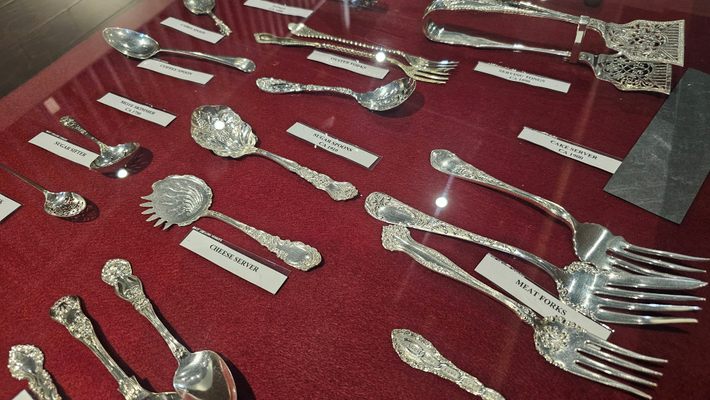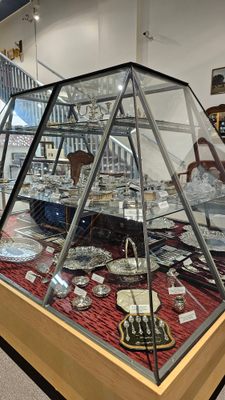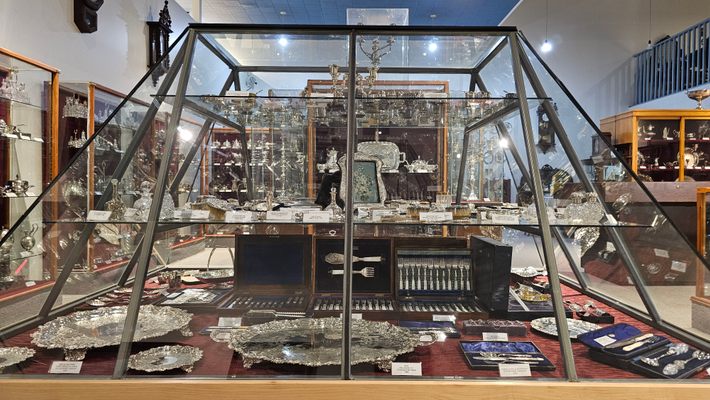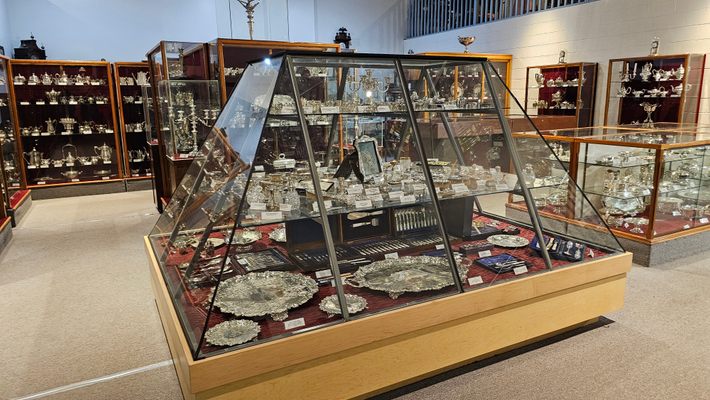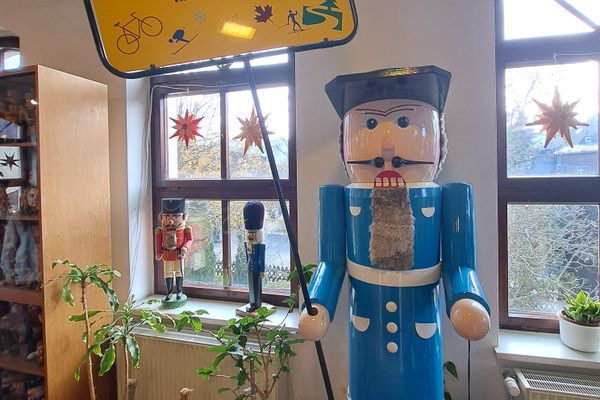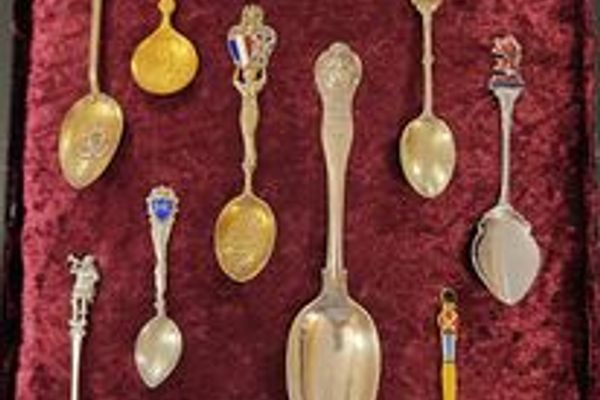About
Charles Wilson, a farmer from Weyburn, Saskatchewan, may seem an unlikely owner for his extensive collection. Wilson traveled the world collecting pieces of dining room silver. On his death, he left all 3,333 pieces, plus some additional glassware and other antiques, to the Soo Line Historical Museum in Weyburn, to share with the world.
While nobody knows what motivated Wilson to focus on silver, some suspect it may have had something to do with his birthplace. Born near Nottingham, England, in Swindon in 1904, he came to Canada as a small child. At the time, things like tea services were valued possessions of the wealthy and upper class.
Once they arrived in Weyburn, Wilson's family purchased a hotel, then later, a farm eight miles north of the city. Wilson grew up on the farm, eventually taking it over and running it on his own. There, he was free to pursue his two loves: care of his livestock, and growing the silver collection he'd started as a teen.
Of course, the Canadian prairies weren't an ideal place to build a silver collection, leading Wilson on expeditions throughout North America and Europe, attending auctions, and searching out his treasures. The collection itself is evidence of the lengths to which Charlie went to find these unique pieces. Each piece of silver is labeled as to its purpose, from butter spears to berry spoons, as well as their dates or periods. There is, for example, a coffee pot manufactured by Columbia Silver Co. circa 1890, and a water jug manufactured by B.M. Mounts in the same period.
Some pieces are vessels for stories. A silver cup and cover presented to Sir Robert and Lady Abercromby as a wedding present from the tenants of their estates on June 26, 1883, is one of Wilson's prized specimens.
While these items may be things we still see today, much of the collection is reflective of the upper class of earlier eras. From cruet bottles that held vinegar to salvers—trays used for tasting—many pieces give insights into the Georgian and Victorian era lifestyles of the wealthy. However, not all of the pieces are related to food service. Additional pieces include things like scent and perfume bottles, ladies' dresser sets, and even evening bags.
Some rare pieces include a coconut cup and menu holder made of two horns set in silver from Calcutta, India, from 1870, Russian enameled spoons, and candle snuffers on trays. The collection pieces span the years from 1750 to 1972.
Today, the full collection is stored in a room at the Soo Line Museum in Weyburn, where visitors can follow Wilson on his trips around the world through his menagerie of silver wears.
Related Tags
Know Before You Go
The museum is open seasonally from June through August from 10 a.m. to 6 p.m. Private tours are available at other times of the year by appointment.
Community Contributors
Added By
Published
September 3, 2024
